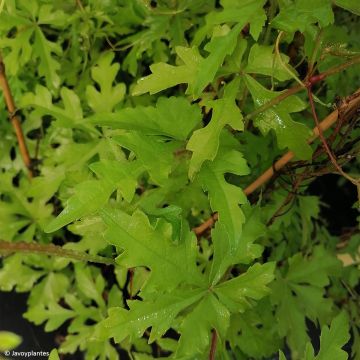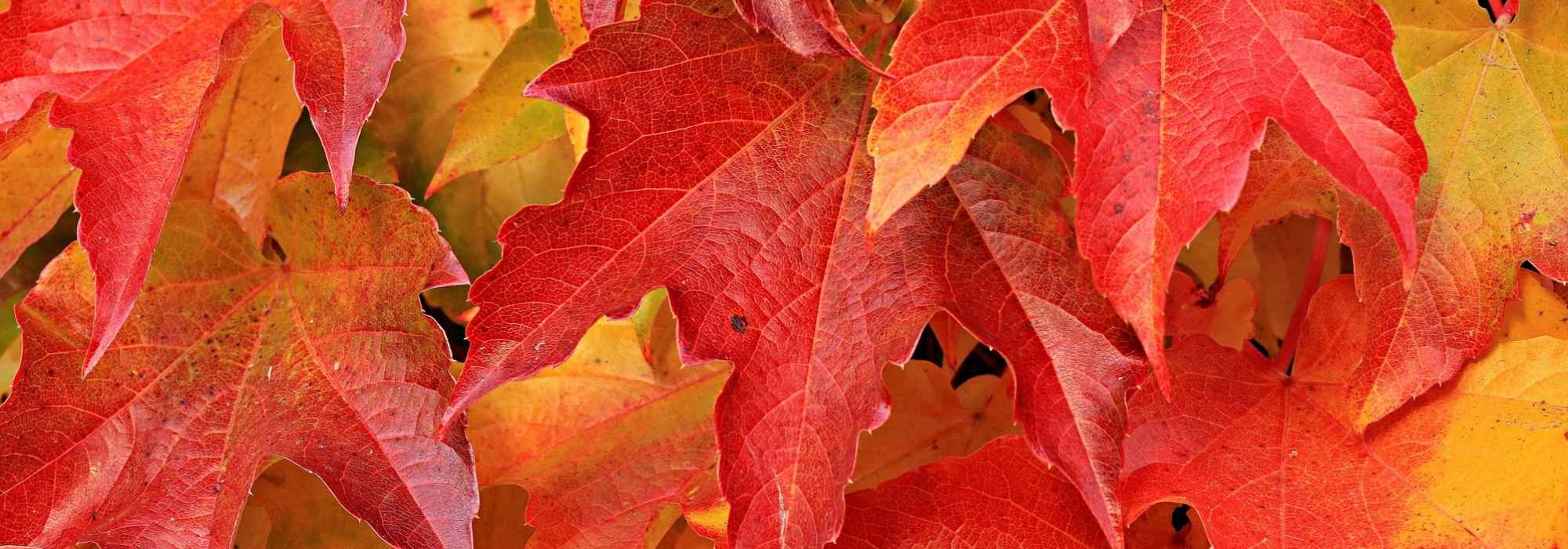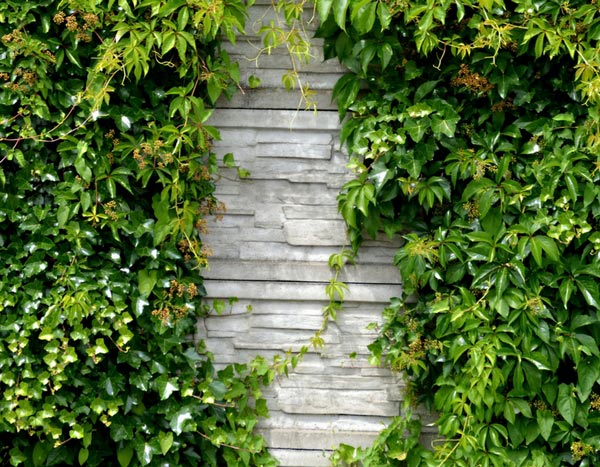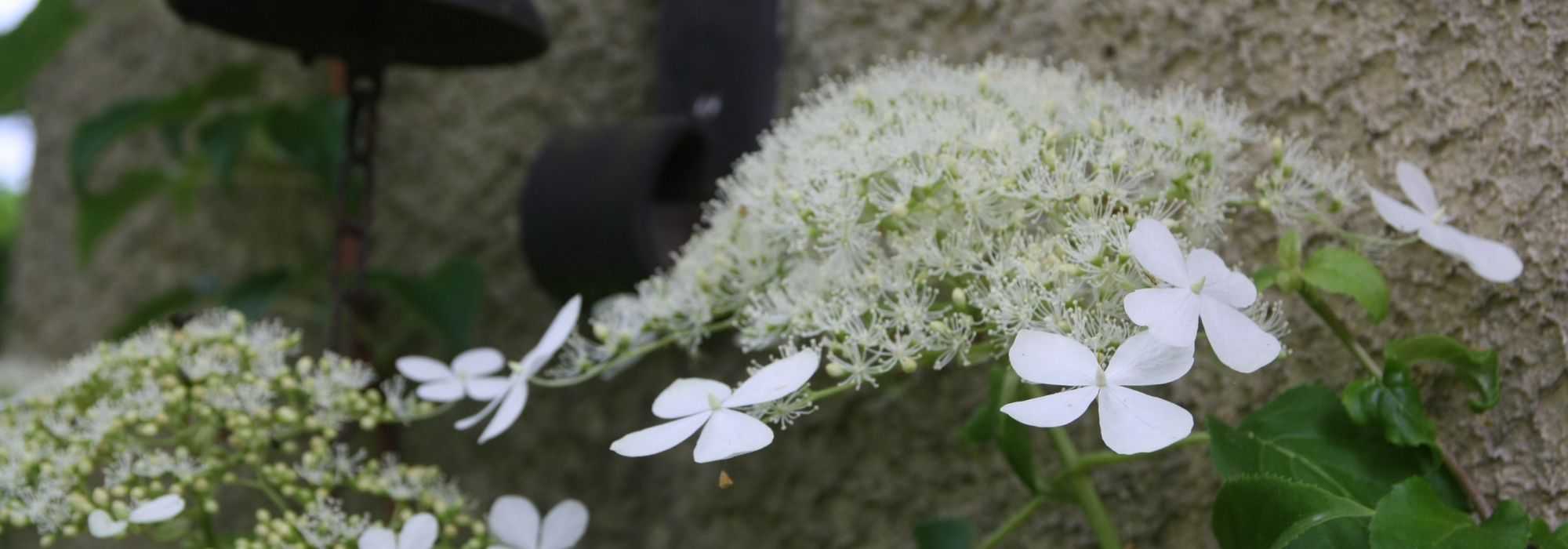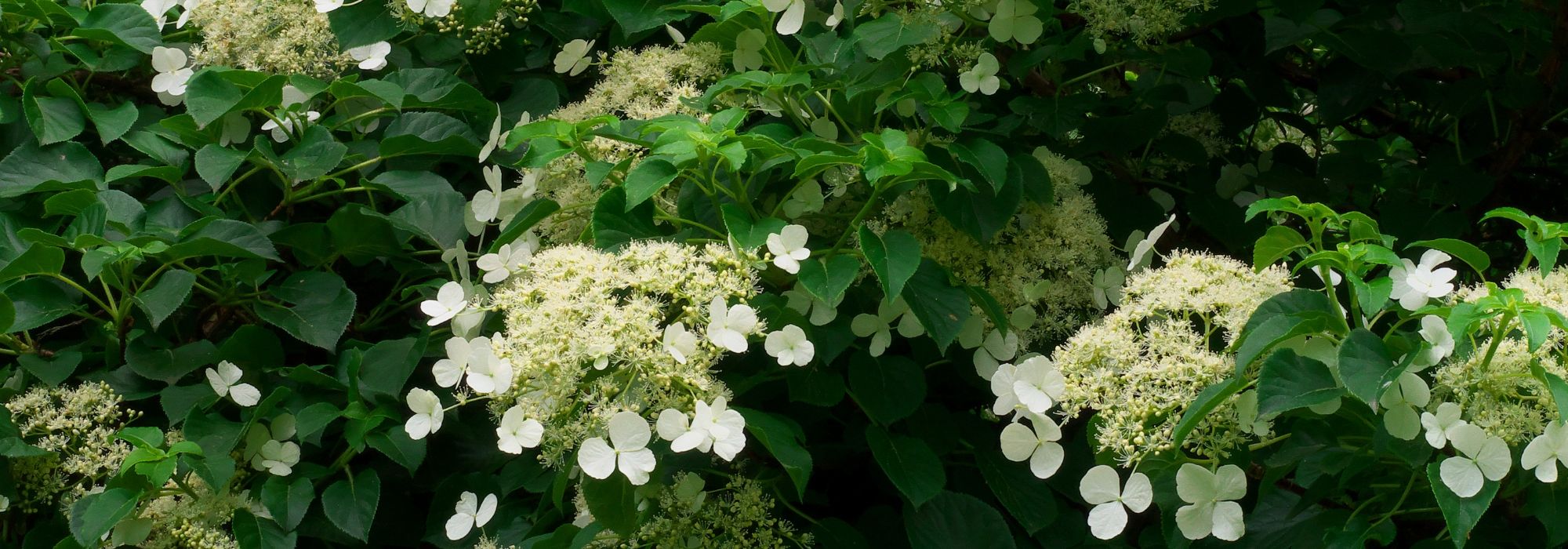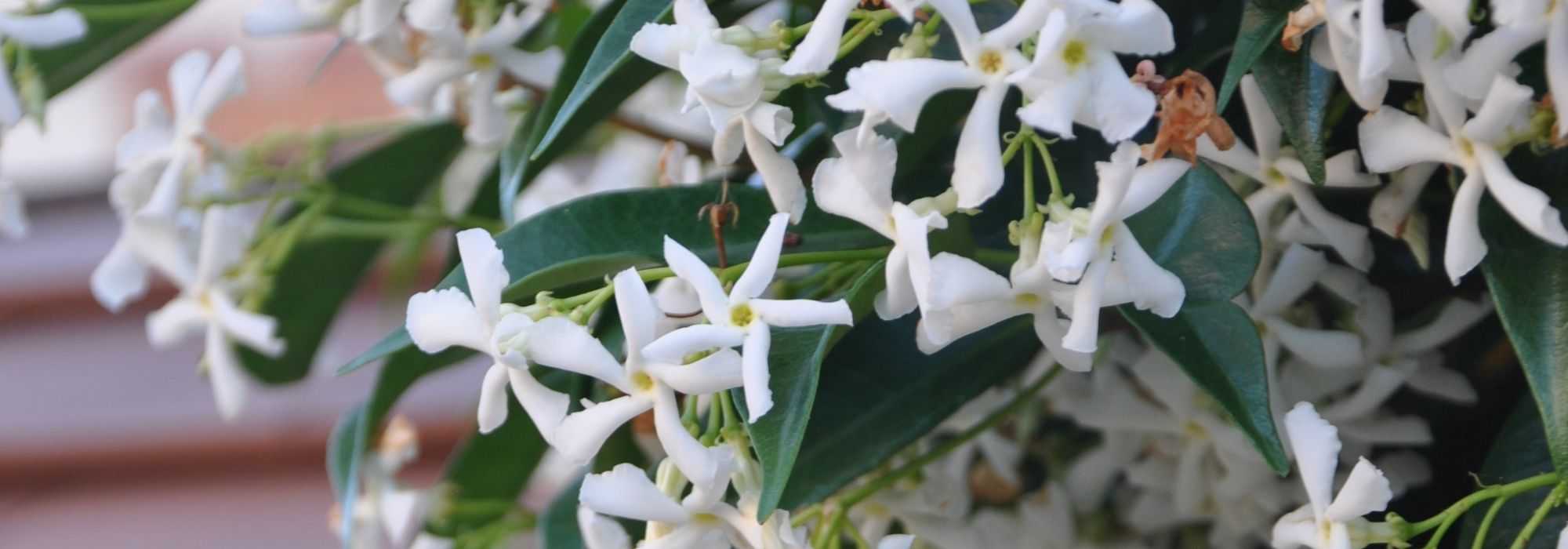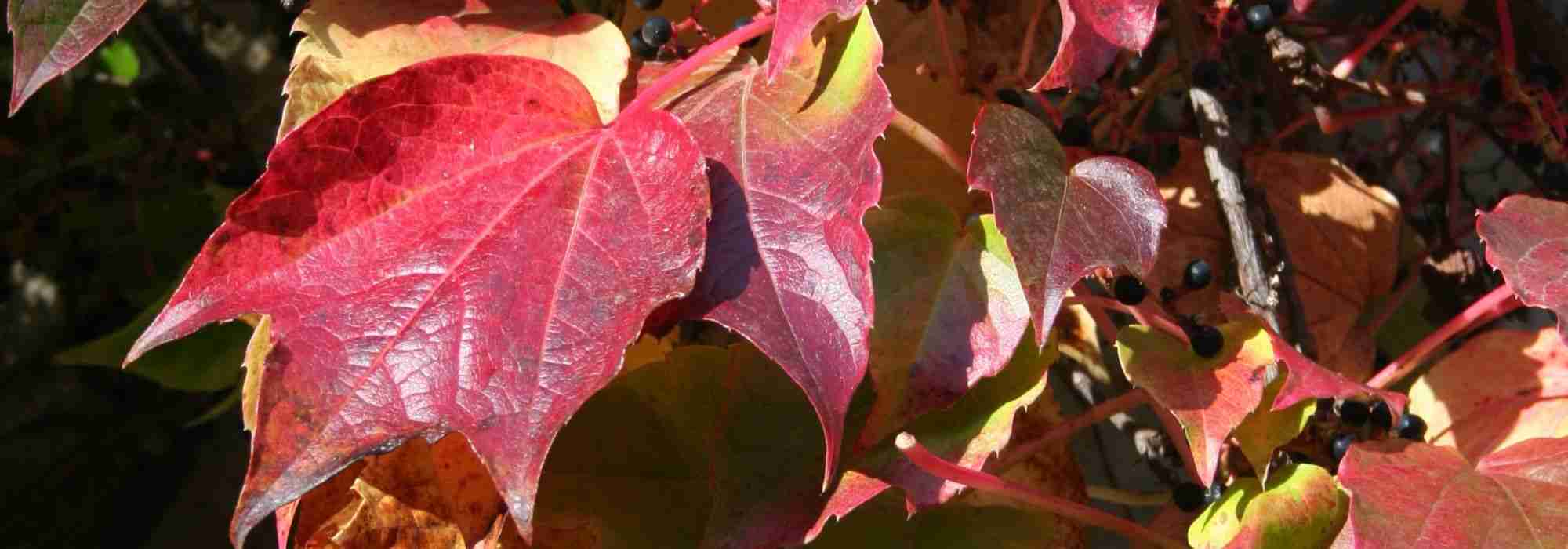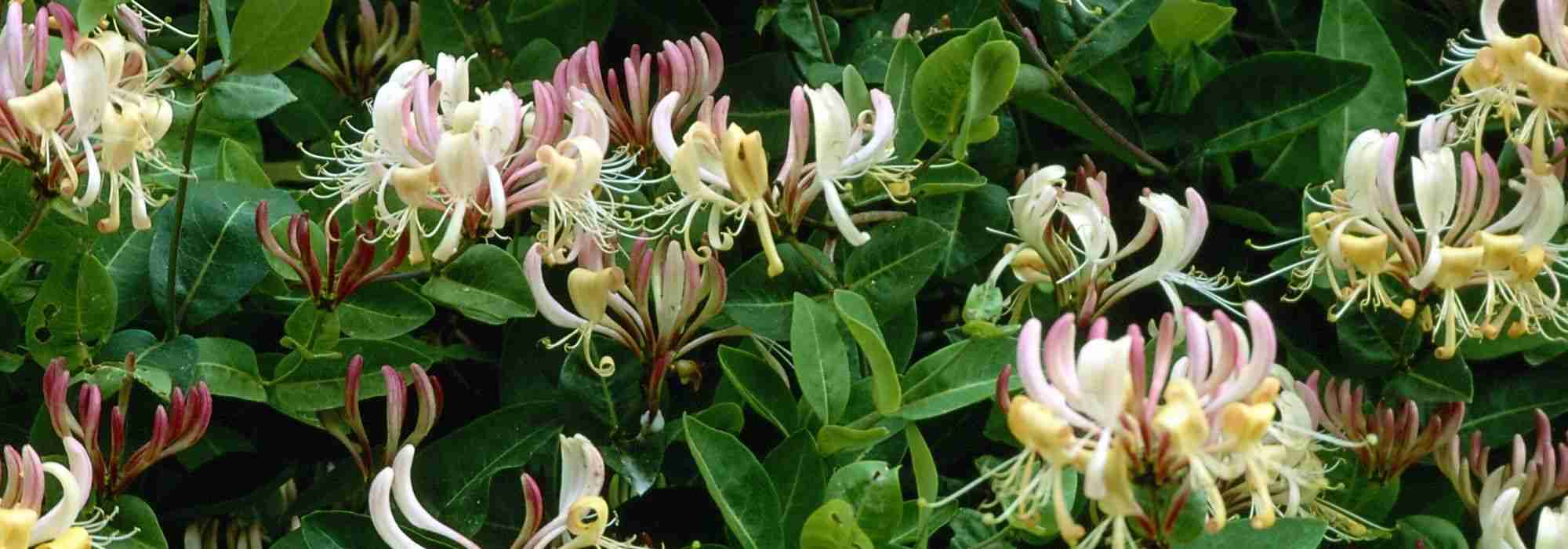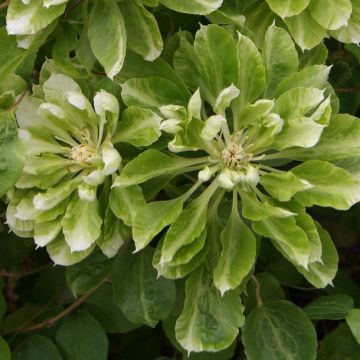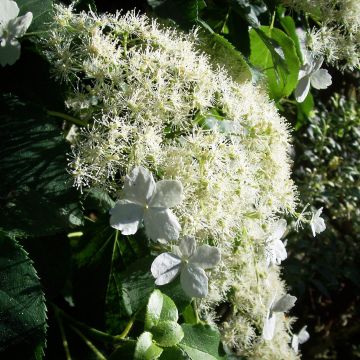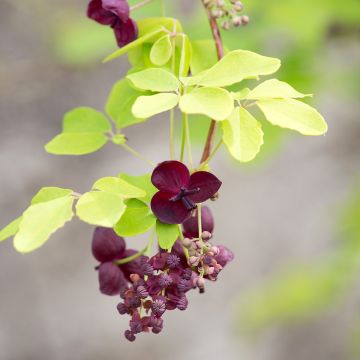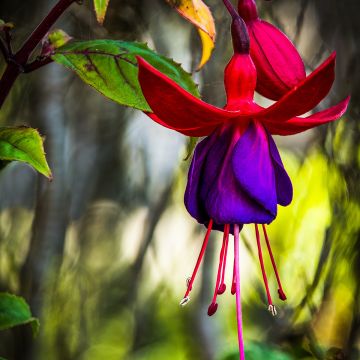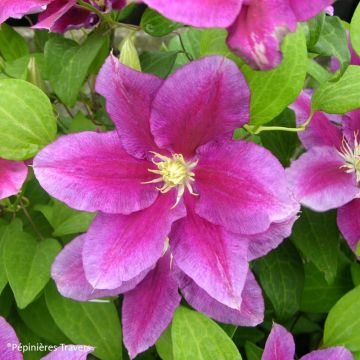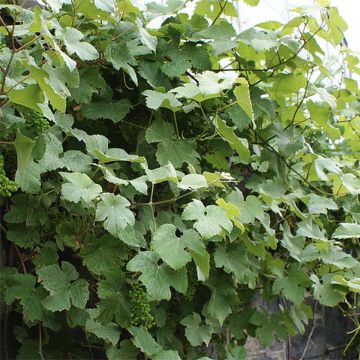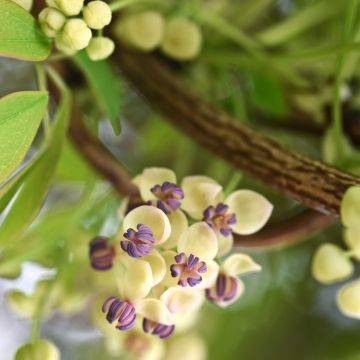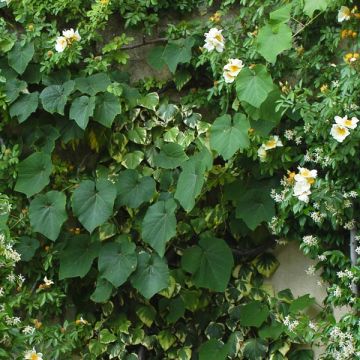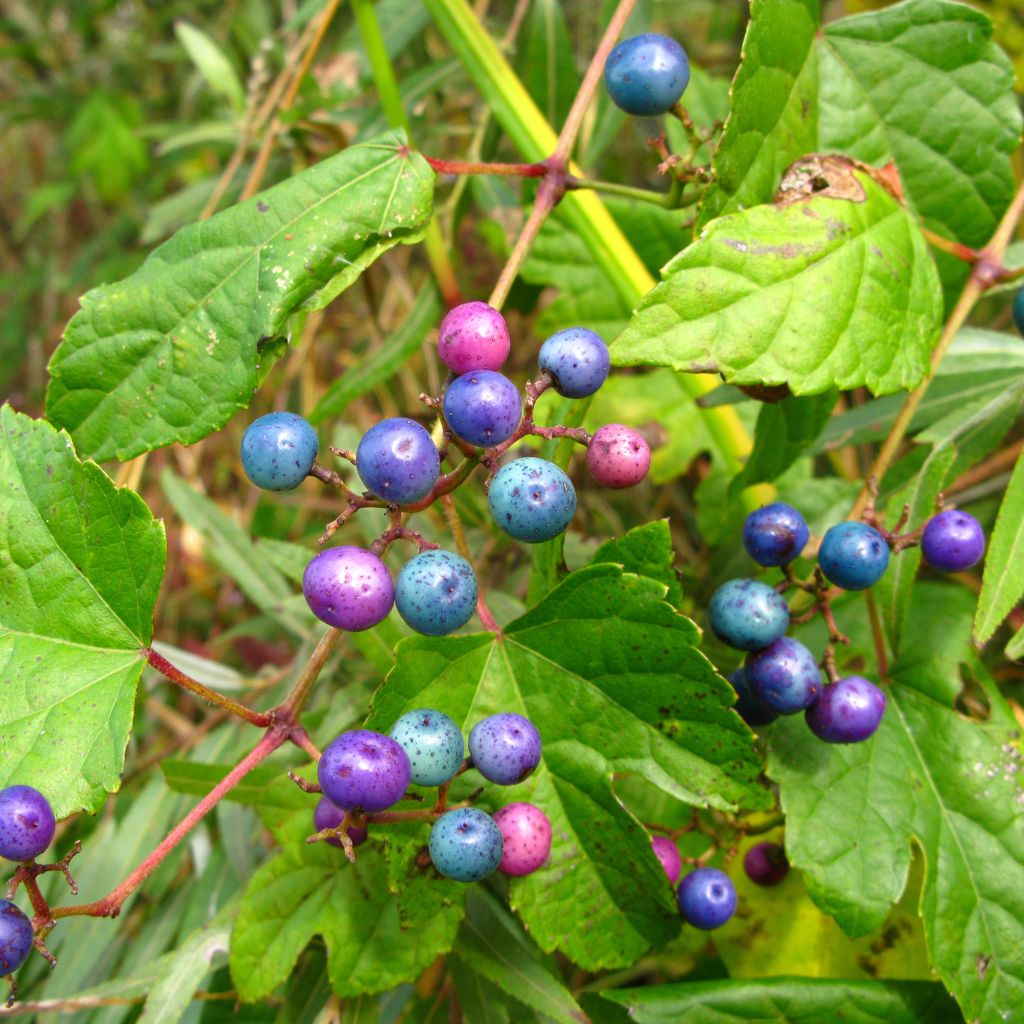

Ampelopsis glandulosa var. maximowiczii
View more pictures
Hide images
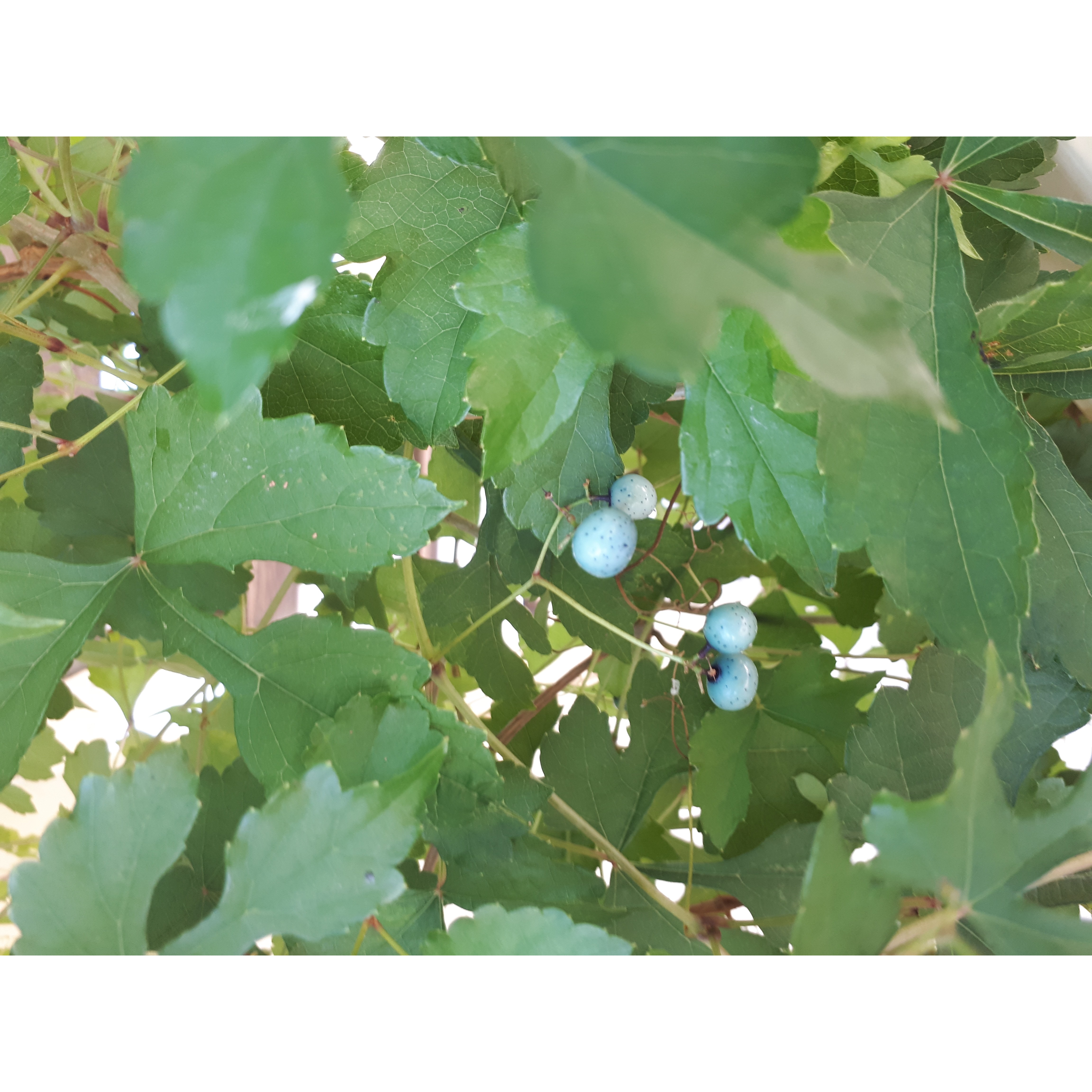
Guy N.

Guy N. • 69 FR
Ampelopsis glandulosa var. maximowiczii
Ampelopsis glandulosa var. maximowiczii
Variegated Virginia creeper
Hello, I would like to know if the berries of this beautiful plant are toxic to animals (a young dog that chews on everything!) Thank you.
Michelle, 09/08/2018
Special offer!
Receive a €20 voucher for any order over €90 (excluding delivery costs, credit notes, and plastic-free options)!
1- Add your favorite plants to your cart.
2- Once you have reached €90, confirm your order (you can even choose the delivery date!).
3- As soon as your order is shipped, you will receive an email containing your voucher code, valid for 3 months (90 days).
Your voucher is unique and can only be used once, for any order with a minimum value of €20, excluding delivery costs.
Can be combined with other current offers, non-divisible and non-refundable.
Why not try an alternative variety in stock?
View all →This plant carries a 6 months recovery warranty
More information
We guarantee the quality of our plants for a full growing cycle, and will replace at our expense any plant that fails to recover under normal climatic and planting conditions.

Would this plant suit my garden?
Set up your Plantfit profile →
Description
Ampelopsis glangulosa var. maximowiczii is a vigorous climbing plant of moderate growth. It is still not widely used in our gardens. Its ornamental aspect lies mainly in its astonishing fruiting. Attracting the eye, the clusters appear to be composed of multicolored porcelain beads, in perfect harmony with the bright green foliage composed of lobed leaves. The foliage is less dense than that of the common Virginia creeper. This splendid plant covers itself with beautiful autumnal colours and clings by means of tendrils. Perfectly hardy, undemanding, intensely unique, it is destined for a great future.
Ampelopsis belong to the family of Vitaceae. The origins of the species A. glandulosa are found in China, India, Japan, Myanmar, and Nepal. It is a climbing plant that can reach 4.5 to 5 metres (15 to 16 feet) in all directions. Its growth is rapid. The deciduous and bright green foliage is composed of alternate, compound, variable-shaped leaves, more or less trilobed. Flowering occurs from April to August, in the form of small greenish flowers organised in cymes. It is followed in late summer and autumn by the formation of 5 to 8 mm (0in) diameter seeds, whose colour evolves as they ripen, in a mixture of pale green, turquoise blue, bright blue, pink, mauve, and violet. Its tendrils are non-adhesive and have 2 or 3 branches. The seeds are dispersed by birds that relish them. In the absence of more precise data, it is best to avoid consuming them.
Ampelopsis glandulosa var. heterophylla can be grown like the classic Virginia creeper, on a facade, although its size is more modest, or on a large tree, or on a support such as a pergola or a fence to which it will cling with its tendrils.
In China, the leafy stems and roots are used for their medicinal properties. The fruit is said to be suitable for winemaking according to some.
Ampelopsis glandulosa var. maximowiczii in pictures
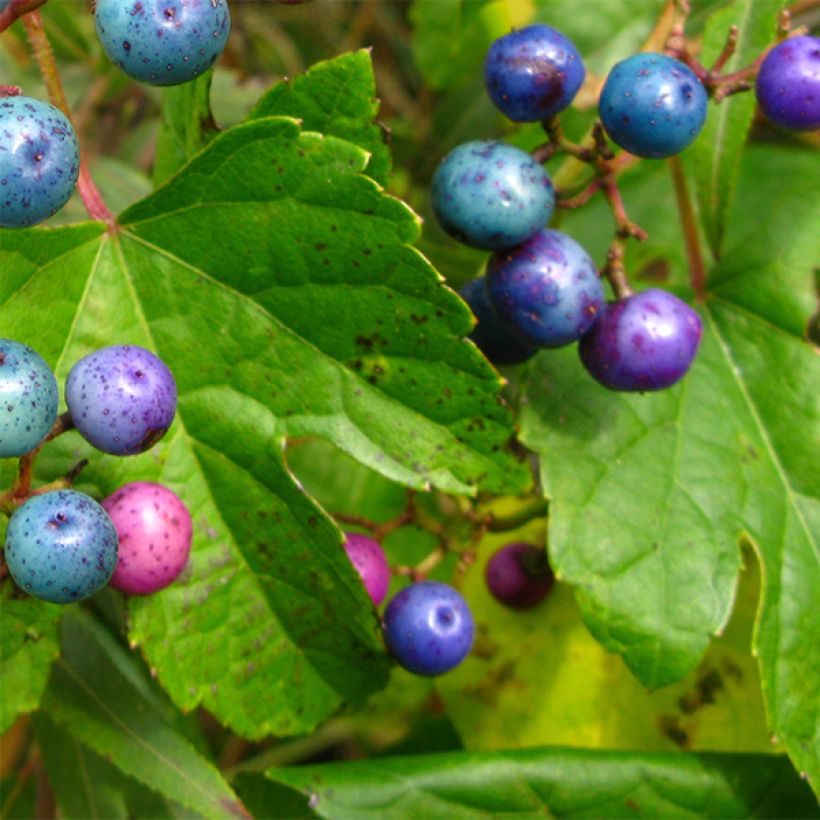

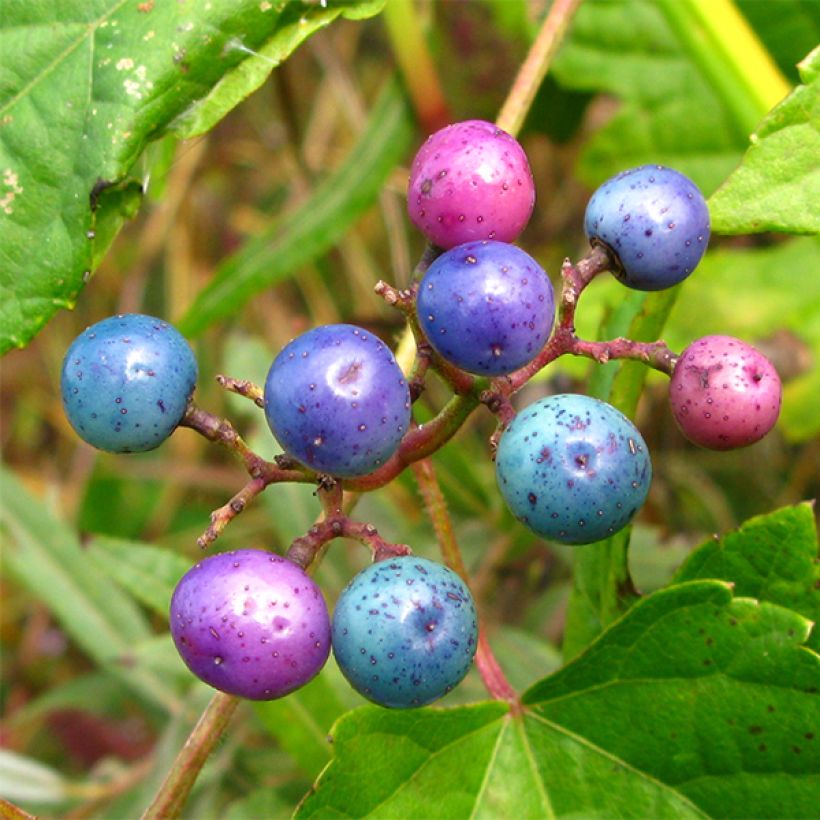

Plant habit
Flowering
Foliage
Botanical data
Ampelopsis
glandulosa var. maximowiczii
Vitaceae
Variegated Virginia creeper
China
Other Ampelopsis - Virginia creeper
View all →Planting and care
Ampelopsis glandulosa var. maximowiczii, a climbing vine with blue fruits, should be planted in autumn or spring in a damp, deep soil that retains moisture but is well-drained, neither too chalky nor too acidic. It appreciates indirect sun or partial shade. Be careful not to damage the root ball! Train the young plants until they can cling on their own. Monitor the growth of this climbing plant and pinch back misdirected voluble stems. Prune vigorously after fruiting.
Planting period
Intended location
Care
Planting & care advice
-
, onOrder confirmed
Reply from on Promesse de fleurs
Similar products
Haven't found what you were looking for?
Hardiness is the lowest winter temperature a plant can endure without suffering serious damage or even dying. However, hardiness is affected by location (a sheltered area, such as a patio), protection (winter cover) and soil type (hardiness is improved by well-drained soil).

Photo Sharing Terms & Conditions
In order to encourage gardeners to interact and share their experiences, Promesse de fleurs offers various media enabling content to be uploaded onto its Site - in particular via the ‘Photo sharing’ module.
The User agrees to refrain from:
- Posting any content that is illegal, prejudicial, insulting, racist, inciteful to hatred, revisionist, contrary to public decency, that infringes on privacy or on the privacy rights of third parties, in particular the publicity rights of persons and goods, intellectual property rights, or the right to privacy.
- Submitting content on behalf of a third party;
- Impersonate the identity of a third party and/or publish any personal information about a third party;
In general, the User undertakes to refrain from any unethical behaviour.
All Content (in particular text, comments, files, images, photos, videos, creative works, etc.), which may be subject to property or intellectual property rights, image or other private rights, shall remain the property of the User, subject to the limited rights granted by the terms of the licence granted by Promesse de fleurs as stated below. Users are at liberty to publish or not to publish such Content on the Site, notably via the ‘Photo Sharing’ facility, and accept that this Content shall be made public and freely accessible, notably on the Internet.
Users further acknowledge, undertake to have ,and guarantee that they hold all necessary rights and permissions to publish such material on the Site, in particular with regard to the legislation in force pertaining to any privacy, property, intellectual property, image, or contractual rights, or rights of any other nature. By publishing such Content on the Site, Users acknowledge accepting full liability as publishers of the Content within the meaning of the law, and grant Promesse de fleurs, free of charge, an inclusive, worldwide licence for the said Content for the entire duration of its publication, including all reproduction, representation, up/downloading, displaying, performing, transmission, and storage rights.
Users also grant permission for their name to be linked to the Content and accept that this link may not always be made available.
By engaging in posting material, Users consent to their Content becoming automatically accessible on the Internet, in particular on other sites and/or blogs and/or web pages of the Promesse de fleurs site, including in particular social pages and the Promesse de fleurs catalogue.
Users may secure the removal of entrusted content free of charge by issuing a simple request via our contact form.
The flowering period indicated on our website applies to countries and regions located in USDA zone 8 (France, the United Kingdom, Ireland, the Netherlands, etc.)
It will vary according to where you live:
- In zones 9 to 10 (Italy, Spain, Greece, etc.), flowering will occur about 2 to 4 weeks earlier.
- In zones 6 to 7 (Germany, Poland, Slovenia, and lower mountainous regions), flowering will be delayed by 2 to 3 weeks.
- In zone 5 (Central Europe, Scandinavia), blooming will be delayed by 3 to 5 weeks.
In temperate climates, pruning of spring-flowering shrubs (forsythia, spireas, etc.) should be done just after flowering.
Pruning of summer-flowering shrubs (Indian Lilac, Perovskia, etc.) can be done in winter or spring.
In cold regions as well as with frost-sensitive plants, avoid pruning too early when severe frosts may still occur.
The planting period indicated on our website applies to countries and regions located in USDA zone 8 (France, United Kingdom, Ireland, Netherlands).
It will vary according to where you live:
- In Mediterranean zones (Marseille, Madrid, Milan, etc.), autumn and winter are the best planting periods.
- In continental zones (Strasbourg, Munich, Vienna, etc.), delay planting by 2 to 3 weeks in spring and bring it forward by 2 to 4 weeks in autumn.
- In mountainous regions (the Alps, Pyrenees, Carpathians, etc.), it is best to plant in late spring (May-June) or late summer (August-September).
The harvesting period indicated on our website applies to countries and regions in USDA zone 8 (France, England, Ireland, the Netherlands).
In colder areas (Scandinavia, Poland, Austria...) fruit and vegetable harvests are likely to be delayed by 3-4 weeks.
In warmer areas (Italy, Spain, Greece, etc.), harvesting will probably take place earlier, depending on weather conditions.
The sowing periods indicated on our website apply to countries and regions within USDA Zone 8 (France, UK, Ireland, Netherlands).
In colder areas (Scandinavia, Poland, Austria...), delay any outdoor sowing by 3-4 weeks, or sow under glass.
In warmer climes (Italy, Spain, Greece, etc.), bring outdoor sowing forward by a few weeks.






























